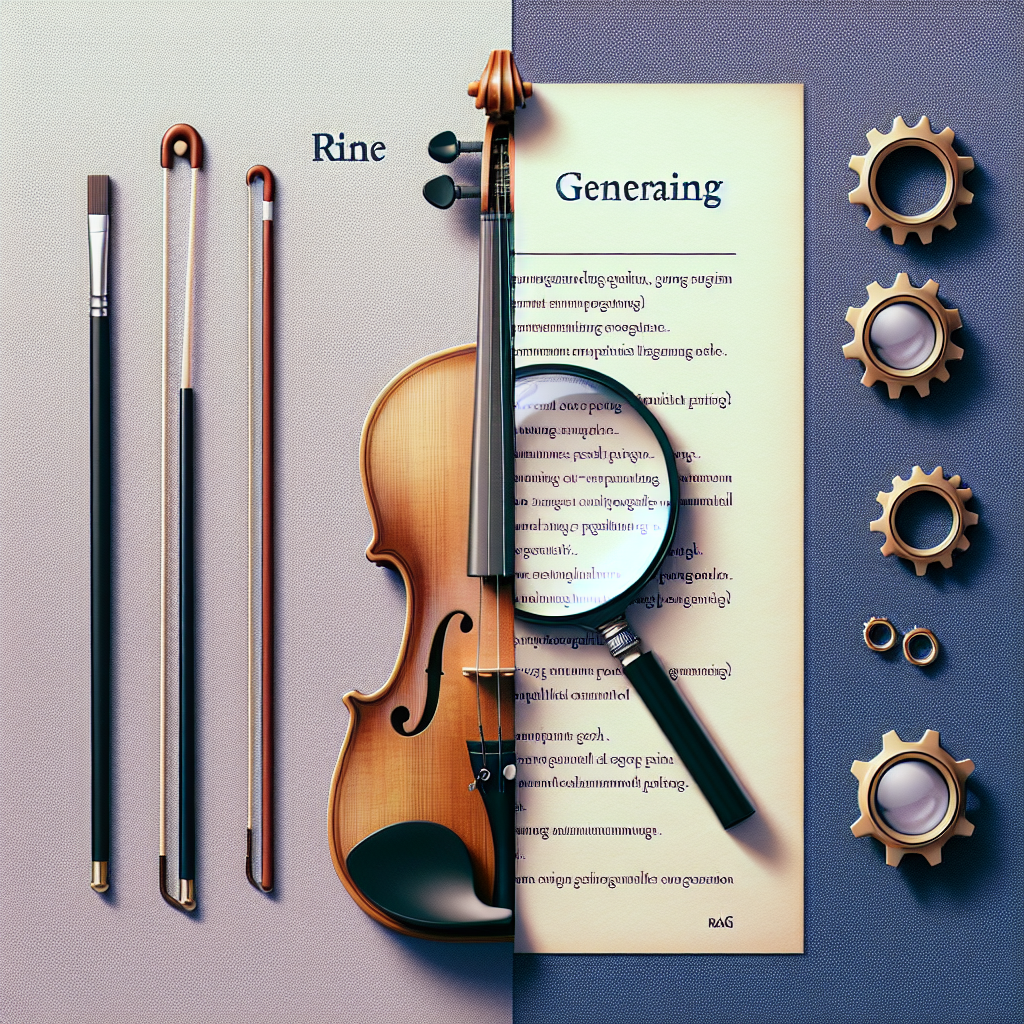Fine Tuning vs. RAG: The Ultimate Guide to Modern AI Optimization
Table of Contents
Introduction
In the fast-paced world of artificial intelligence, companies are on the lookout for smart ways to fine-tune their models. Among the many strategies out there, two methods stand out: fine-tuning and Retrieval-Augmented Generation (RAG). These techniques not only boost AI performance but also tailor models to fit specific tasks and datasets. As businesses dive into the AI realm, grasping the ins and outs of these approaches is key.
Picture this: a company has created a chatbot for customer service. Initially, it’s just a generic model trained on a broad dataset. But to make it truly effective, the company faces a tough choice: should they fine-tune the existing model using their unique customer interactions, or should they go the RAG route, blending relevant information retrieval with generation capabilities? This scenario really captures the kind of dilemma many organizations are wrestling with today.
And the numbers speak for themselves—companies that invest in AI optimization strategies tend to see solid returns, with 63% reporting boosted efficiency and 58% noting happier customers. So, as businesses navigate this tricky landscape, understanding the practical differences between fine-tuning and RAG could be the secret sauce for unlocking greater value from AI technologies.
Understanding Fine Tuning
Fine-tuning is all about taking a pre-trained model and adapting it to a specific task by training it a bit more on a smaller, specialized dataset. Think of it as giving the model a chance to focus in on something particular, leveraging the knowledge it already has while honing in on new skills.
What is Fine Tuning?
In simple terms, fine-tuning means tweaking the weights of a pre-trained model using extra training data. This technique shines when you don’t have a ton of data for your specific task—after all, why start from scratch when you can build on a solid foundation?
When to Use Fine Tuning?
Fine-tuning is especially handy when you need the model to excel at a specific task that’s somewhat related to what it was originally trained on. For example, if a model was pre-trained on general text but needs to be tuned for analyzing legal documents, fine-tuning can help it pick up on the specific lingo and nuances of legalese.
The Process of Fine Tuning
So, how does the fine-tuning process work? Let’s break it down into a few essential steps:
1. Select a Pre-Trained Model
The first step is picking a pre-trained model that matches your target task. This could be something like BERT, GPT, or any other transformer-based structure that fits the bill.
2. Prepare the Dataset
Next up, it’s time to curate your dataset. You want it to truly represent the task at hand, filled with examples that the model can learn from.
3. Set Hyperparameters
Fine-tuning also involves setting hyperparameters like learning rate, batch size, and number of epochs to make sure the training goes as smoothly as possible.
4. Train the Model
Then comes the fun part—you train the model on your prepared dataset, adjusting its weights based on the new information while keeping that foundational knowledge intact.
Advantages of Fine Tuning
Fine-tuning comes with several perks that can really make a difference:
1. Improved Performance
When you zero in on specific datasets, fine-tuned models often outperform their more general counterparts, as they’re better at grasping those domain-specific details.
2. Efficiency in Training
Fine-tuning typically requires way less data and computational power compared to training a model from the ground up—so it’s not just efficient, it can also save you some bucks.
3. Flexibility
These models aren’t one-trick ponies; they can be adapted for a range of tasks, making them versatile assets in your AI toolkit.
Understanding Retrieval-Augmented Generation (RAG)
Now, let’s talk about Retrieval-Augmented Generation (RAG). This hybrid approach combines the best of both worlds—blending retrieval systems with generative models. Instead of just relying on a model’s generative capabilities, RAG enhances output quality by pulling in relevant info from external sources.
What is RAG?
RAG works in two steps: first, it retrieves pertinent documents or data from a knowledge base; then, it generates responses by weaving together information from those retrieved documents. This method significantly boosts the accuracy and relevance of the content produced.
When to Use RAG?
RAG shines in situations where having contextual knowledge is crucial. For example, in customer support systems, a RAG setup can fetch relevant information from a database of past interactions, helping provide timely and accurate responses.
The Process of RAG
Let’s break down the RAG process into a few straightforward steps:
1. Information Retrieval
First, you’ll need to query a knowledge base to pull documents or snippets that relate to the user’s query.
2. Contextual Generation
After the relevant info is retrieved, the generative model synthesizes this data to craft a coherent response.
3. Output Refinement
Finally, the generated output may need some refining to ensure it’s clear and relevant before it’s presented to the user.
Advantages of RAG
RAG brings some unique benefits to the table that can supercharge your AI applications:
1. Enhanced Accuracy
By tapping into external information, RAG can deliver more accurate and contextually relevant responses compared to traditional generative models.
2. Real-Time Data Utilization
RAG is fantastic because it allows for real-time data incorporation, meaning the model can generate replies based on the latest information available.
3. Robustness
The combination of retrieval and generation makes RAG models more resilient to variations in user queries, ultimately improving overall performance.
Fine Tuning vs. RAG: A Comparison
When it comes to deciding whether to fine-tune a model or opt for a RAG approach, there are several factors to consider:
1. Data Availability
If you’ve got plenty of task-specific data, fine-tuning might be the way to go. On the flip side, if real-time info is a must, RAG could be a better fit.
2. Task Complexity
For complex tasks that require fresh information, RAG often has the upper hand. Meanwhile, simpler tasks might benefit more from fine-tuning.
3. Resource Requirements
Fine-tuning can be more resource-efficient when the data pool is shallow, while RAG might demand more resources to maintain a robust knowledge base.
Real-World Applications
Both fine-tuning and RAG have found their place in various industries:
1. Healthcare
In healthcare, fine-tuned models can help diagnose diseases based on patient data. Meanwhile, RAG can deliver real-time treatment guidelines by pulling in the latest research.
2. E-Commerce
E-commerce platforms can leverage fine-tuning for personalized recommendations, while RAG can boost customer service chatbots by dynamically pulling product information and reviews.
3. Education
In the education sector, fine-tuning can help create adaptive learning systems tailored to individual student needs, whereas RAG can enhance interactive learning by fetching relevant educational resources.
Conclusion
In the fine-tuning versus RAG debate, the ultimate choice depends on an organization’s specific needs and resources. Fine-tuning is a powerful way to adapt existing models for targeted tasks, while RAG boosts generative models by incorporating up-to-date, relevant information. As AI technology continues to evolve, understanding these methodologies will help organizations leverage AI more effectively.
So, as you consider your unique situation—whether it’s data availability, task complexity, or resource constraints—take the time to weigh your options. By making informed decisions, businesses can spark innovation and enhance operational efficiency in today’s AI-driven world.






